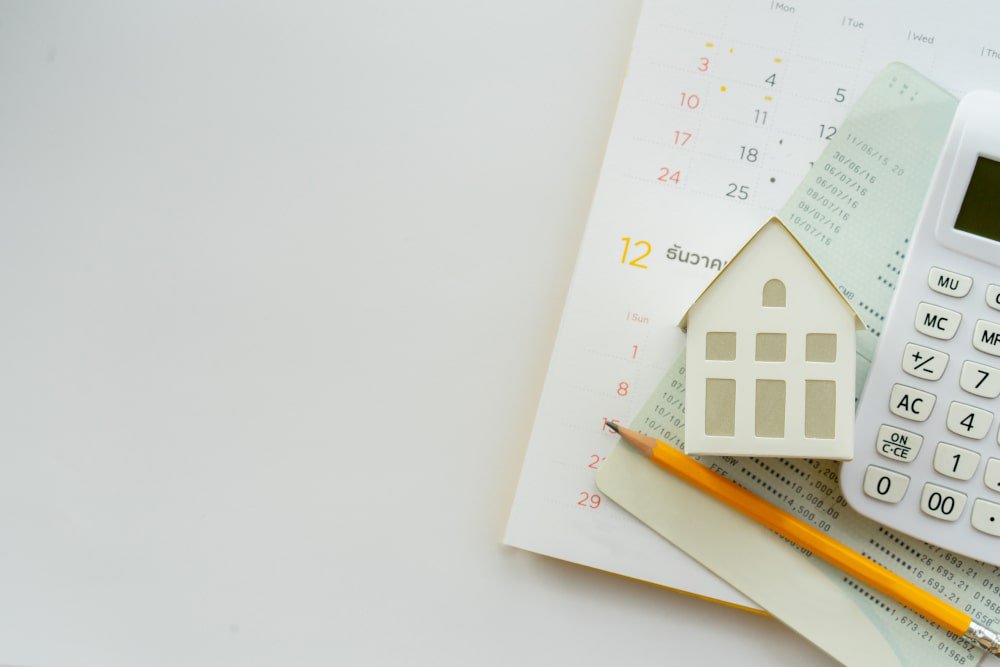Everything You Need to Know About Mortgage Payment Schedules

A mortgage payment schedule is a plan outlining the repayment process of your loan, also known as an amortization schedule . When you sign your mortgage contract, your lender will set out a program that divides your mortgage into equal or near-equal monthly, weekly, or bi-weekly installments. Given that, for the most part, you can negotiate the terms of your mortgage contract, how can you know which type of payment schedule is best for you?
Breaking Down Your Mortgage Payment Schedule
A mortgage payment schedule is a complete table of your recurring loan payments, showing the breakdown of each payment until the loan is paid off, while also showing how much will have been paid and how much will be remaining at the end of its term. These payments are often uniform in size and frequency.
There are two types of common mortgage payment types. The first is a combination of principal and interest, and the second is interest-only.
With the first option, every time you make a monthly mortgage payment, your capital is divided into two categories: principal and interest. This is often referred to as a P&I payment. External costs such as homeowners’ insurance or property taxes may need to be paid separately. In the case of the second option, the borrower only makes interest payments and none of the principal is paid down by the end of the term. This is typically only seen with private mortgage lenders.
In the P&I payment option, the “P” principal represents the outstanding balance of your original loan. It does not take any other expenses into account. The other part of your payment goes towards covering interest. You can look at interest as being the cost of borrowing money, or better yet, the lender’s gross profit.
Most lenders want to make back their money as soon as possible to ensure profitability. As such, depending on your amortization period, the payments you during the earlier days of that period will be divided in favour of the interest category. As you continue making your payments and your lender starts to cover more of the cost of financing your loan, the payment breakdown will slowly shift towards greater principal payments— increasing your equity over time.
As a result, when you first start making your payments, you will not see much of a drop in your outstanding balance. Towards the end of your amortization period, however, you will see each installment make a much more significant impact to the actual repayment of the principal of the loan.
A mortgage payment schedule can also help you calculate the best financial course of action. If you increase the size of your payments, thus decreasing the number of installments, you will also reduce the total interest you pay over the lifetime of your loan. Creating a mortgage payment schedule can help you calculate the most profitable size and frequency for your installments.
Different Types of Mortgage Payment Schedules
Choosing the right mortgage payment schedule can be a daunting task. There are many factors to consider. It might be tempting, for instance, to select a plan that demands small monthly payments over a more extended period. However, longer plans generate greater interest costs in the long run. This means that it will take longer to pay off your mortgage completely, if that is your goal.
The best way to look into different mortgage payment schedules is to start with a typical program and then play around with the variables until you find your ideal conditions. Try editing the payments' size, frequency, or play around with different types of interest rates. You can also explore the impact of varying amortization periods.
Using this method, you can calculate the total savings generated by choosing one repayment method above another.
Is Faster Always Better?
While it may be more cost-efficient to try and speed up your mortgage repayment, this is not a possibility for every home buyer or homeowner. Given the ever-rising housing costs across Canadian real estate markets and the new hike in interest rates, more and more home buyers are forced to take on mortgages that they cannot comfortably pay off on an accelerated schedule.
Although having a longer amortization period racks up increased interest costs over your loan’s lifetime, a shortened schedule is simply not feasible for many Canadians these days.
How to Speed Up Your Mortgage Payment Schedule
If you are looking to speed up your mortgage payment schedule, there are a few aspects of your contract you may be able to negotiate with your lender so that your loan suits your needs. Here are a few of the changes you can possibly request:
Cut Your Amortization Period
Your amortization period is often set out in your mortgage contract. It is the amount of time it will take to finish your P&I payments and pay off your loan in full. You can shorten your amortization period by increasing the size or frequency of your payments. A fast amortization period will reduce your interest costs in the long run.
If aiming for a shorter amortization period, your best bet is to ensure your preferred terms are outlined in your contract. Most lenders do not let you shorten your amortization period too much halfway through your repayment plan as they lose out on previously promised interest, however many lenders allow some forms of accelerated payments such as lumpsum annual payments up to a certain percent of the total loan amount, or double-up monthly payments. Speak to your mortgage broker to learn about your pre-payment options.
Make a Larger Down Payment
The more money you put down , the less money you have to borrow. A smaller mortgage will always be easier to pay off and speed up.
Consider Your Interest Rates
When taking on a mortgage, you are often given a choice between a fixed and a variable interest rate.
Fixed-rate mortgages will lock in the market rate at the time of your contract signing and will continue to apply that rate for the duration of your amortization period. This type of mortgage can shield you from the effects of rising interest rates .
On the other hand, variable-rate mortgages will constantly change their interest rates to match the market. When rates rise, you will lose out, but you will benefit when rates drop.
The lower your interest rate, the easier your loan will be to pay off, and the faster you can pay it. You should choose the interest rate that you feel will be most advantageous to you in the long run.
Work With Professionals
Shortening your mortgage payment schedule is easier said than done. Most lenders do not want you to shorten your amortization period as they may lose out on your interest payments. Sometimes, it takes a team of professionals to help negotiate the perfect contract for you— on your terms.
Here at Clover Mortgage, we actively work with over 50 lenders in the Greater Toronto Area (GTA) and across Ontario. Our expert team of professional mortgage brokers can help you explore your options, negotiate your terms, and connect you with the right mortgage lender for your individual situation and needs.
Contact Clover Mortgage brokers today to schedule a free consultation with one of our professional brokers!
References





